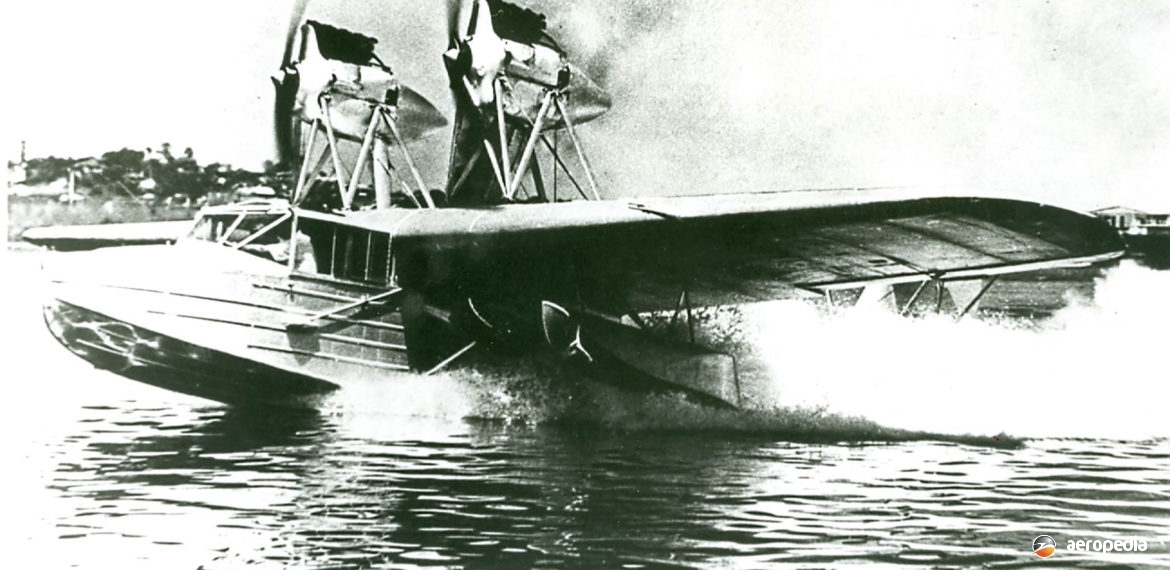Photograph:
Saro Cutty Sark VH-UNV (c/n A.17/2) in Melbourne, VIC in about 1930 (Frank Walters collection)
Country of origin:
United Kingdom
Description:
Amphibious flying boat
Power Plant:
Two 78 kw (104 hp) ADC Cirrus Hermes four-cylinder in-line air-cooled engines
Specifications:
- Wingspan: 13.7 m (45 ft)
- Length: 10.48 m (34 ft 4 in)
- Height: 3.41 m (11 ft 2 in)
- Wing area: 29.72 m² (320 sq ft)
- Max speed: 169 km/h (105 mph)
- Max cruising speed: 137 km/h (85 mph)
- Landing speed: 97 km/h (60 mph)
- Ceiling: 2,896 m (9,500 ft)
- Climb to: 396 m (1,300 ft) 3 mins
- Range: 547 km (347 miles)
- Endurance: 4 hrs
- Empty weight: 1,019 kg (2,246 lb)
- Normal loaded weight: 1,452 kg (3,200 lb)
- Max overload weight: 1,589 kg (3,504 lb)
History:
S E Saunders Ltd (later Saunders Roe) on the Isle of Wight was set up in the 1920s to design and construct amphibians and flying boats, and one of the first designs produced by the Company was the Saro A.17 Cutty Sark. A total of 12 was built, being powered by a variety of engines, including the ADC Cirrus Hermes I, the de Havilland Gipsy II or III, and the Armstrong Siddeley Genet Major I. The engines were installed on struts above the wing centre-section and drove Fairey-Reed propellers. Starting was by compressed air. The undercarriage was retractable and a tail-skid was fitted.
The prototype (G-AAIP – c/n A.17/1) was first flown at Cowes on 4 July 1929. Fitted with dual controls, some interest was shown in using it as a flying boat trainer when it was shown at the Olympia Aero Show. Flying trials for a Certificate of Airworthiness were conducted at the Marine Aircraft Experimental Establishment at Felixstowe, Suffolk. In all, although only 12 aircraft were built, there were in fact 15 variants and seven different types of engines used. Designations were A.17A to A.17Q [excluding A.17O], and weights ranged from 1,088 kg (2,400 lb) to 1,236 kg (2,725 lb) empty and up to 1,769 kg (3,900 lb) loaded.
The Cutty Sark had a two-spar cantilever wooden wing with plywood covering. The hull was a single-step metal structure skinned with Alclad, the fin being integral with the hull. Aircraft built and the models and initial registrations were: c/n A.17.1 (G-AAIP); c/n A.17/2 (VH-UNV); c/n A.17/3 (RNZAF); c/n A.17/4 (G-AAVX, VR-SAA); c/n A.17/5 (G-ABBC); c/n A.17/6 (S1575); c/n A.17/7 (VR-HAY); c/n A.17/8 (G-AETI); c/n A.17/9 (G-ABVF); c/n A.17/10 (G-ACDP); c/n A.17/11 (G-ACDR); and c/n A.17/12 (G-ADAF). One (G-ABVF) had a single engine, an Armstrong Siddeley Lynx IVC engine of 160 kw (215 hp), and this was used by Japanese long-distance pilot, Yoshihara, in May 1932 but was wrecked in an accident.
One example (VH-UNV – c/n A.17/2 – ex L.1) was ordered by Matthews Aviation Pty Ltd of Essendon, VIC for services in Tasmania. It became VH-UNV on 5 April 1930 and entered service, operating to various parts of the island. Photographs show it at Strahan. However, on 26 January 1933, whilst en-route from Melbourne, VIC to Flinders Island, the pilot attempted to return to the Victorian coast due to bad weather and ended up having to land in heavy seas. The passengers were transferred to a steamship nearby and the pilot took off and landed at Gippsland, returning to Essendon the next day.
On 13 September 1934 ownership was transferred to Messrs KRM Farmer and AA Barlow trading as Pioneer Air Services Pty Ltd of Essendon, VIC. On 18 April 1937 it was purchased by K G Caldwell of Roseville, NSW, and on 19 October that year it was purchased by Qantas Empire Airways Ltd. It then operated for a period out of Brisbane, QLD on seaplane conversion training for flying-boat pilots, Qantas at that time having a fleet of Short C-Class Empire flying boats. On 5 April 1938 it crashed into the Brisbane River near Pinkemba when the pilot landed with the wheels down and it turned on its back. It was raised for removal to base but was seriously damaged by the lifting slings, which nearly cut the fuselage in half. The further damage thus occasioned was so extensive that the aircraft was written off.
When first delivered it was fitted with two ADC Cirrus Hermes engines but these were later in March 1931 replaced by de Havilland Gipsy Mk II engines of 90 kw (120 hp). The engines are known to have been later used in a couple of DH.60 Moths; and the fuselage and wing of the Cutty Sark are known to have been stored at Essendon, VIC for a period.
Another example was imported to New Zealand for the RNZAF (c/n A.17/3L3) for seaplane pilot training. It was test flown at Cowes on 3 March 1930 and arrived at Auckland on board the Shaw Savill liner Mataroa on 10 May that year. It was test flown at Hobsonville on 14 June by Sqdn Ldr Isitt and LAC Mayhill and subsequently was used for familiarisation flights for artillery officers, and occasional search and rescue, or communications flights. One report states it was used to convey the Governor General of New Zealand to engagements. It received an overhaul in 1934 and thereafter was used on RNZ Navy co-operation work. Like most seaplanes operating in a salt-water environment, it was very expensive to maintain and service. Eventually, after 211 hrs and 5 mins flying time, it was withdrawn from service and scrapped in 1937, its last flight being a photo-mapping operation on 23 November 1936. It never carried an RNZAF serial and spent its final days as an instructional airframe before being scrapped in 1939. No examples of the Cutty Sark survive.

